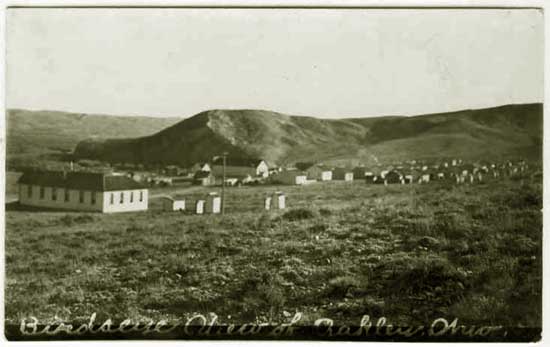
Oakley, approx. 1914..
In addition to Diamondville, there were a number of other coal camps in the Diamondville-Kemmerer area. About 2 1/2 miles south of
Diamondville was Oakley named after
Thomas Sneddon's birthplace in Scotland.
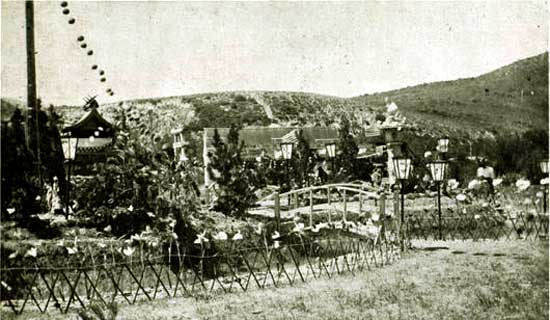
Japanese Tea Garden, Oakley, Wyoming, approx. 1914.
The mines in the Kemmerer-Diamondville area in addition to a large number of Italian and Sovene miners also had
a large Japanese contingent. In southwest Wyoming, it is estimated that there were as many as 2,000 Japanese
miners. The Japanese were recruited by a contracting company located in Salt Lake City. At first,
the Japanese lived in separate sections of the various mining camps from the other miners. Additionally,
at first they were excluded from local unions. By 1907, however, they were admitted on the same basis
as other miners and received the same pay. In Oakley, the miners were represented by Local 2331. Some of the Japanese would send their children
back to Japan for their education.
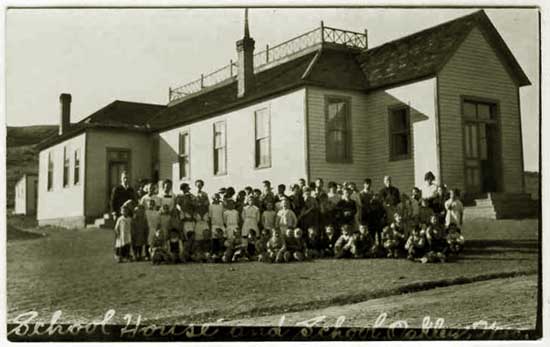
Sublet, Wyoming, 1908
The Oakley mine closed in 1942. As of the 2000 Census, Oakley had a population of 18.
To the southwest of Diamondville was Glencoe, established in 1902, named by
Sneddon after Glencoe, Scotland. In adition to coal, both Oakley and Glencoe provided sandstone used for the
construction of buildings. The Kemmerer Hotel was constructed of sandstone from Oakley. By 1940, Glencoe was deserted.
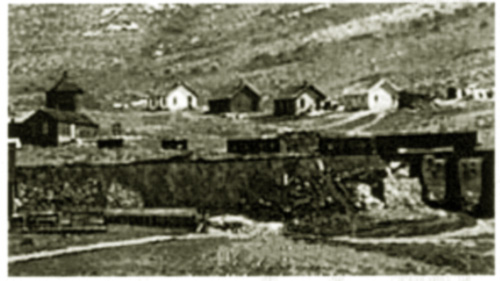
Glencoe, Wyoming, undated
A similar fate met other coal camps in the
Diamondville-Kemmerer area. The original Elkol Mine (the Elk Coal Co.), established in 1908 south of
Diamondville, closed in 1950 but was replaced by an open pit mine now operated by
the Pittsburg & Midway Coal Mining Company. the mine is one of the deepest open pit minec in the world,
some 1,700 feet deep.
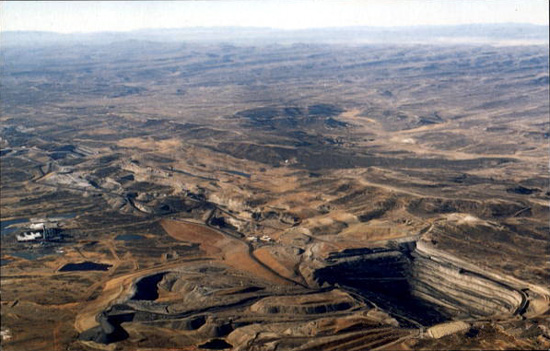
Pittsburgh and Midway Mine, Elkol, Wyoming
Next Page: Sublet.
|